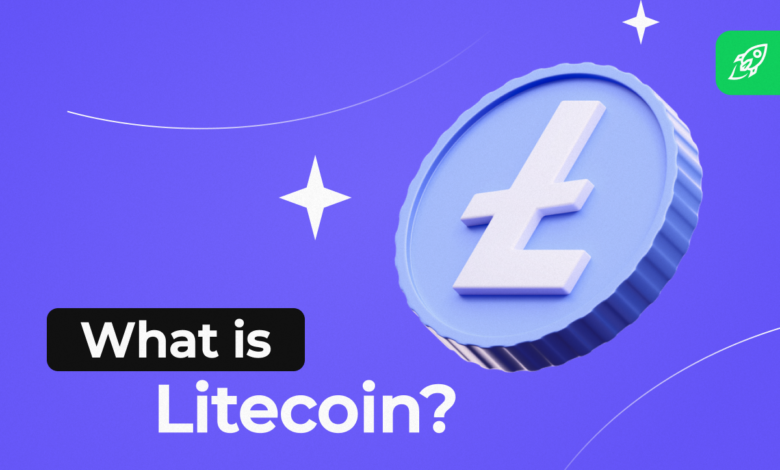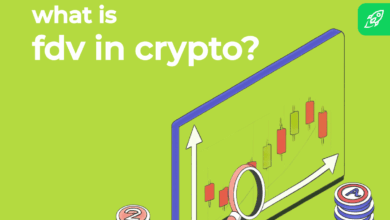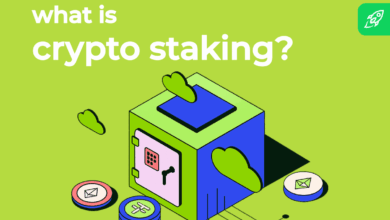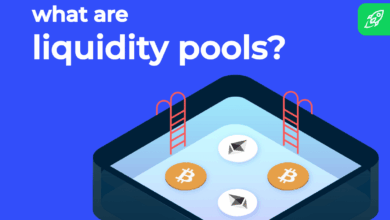What is Litecoin cryptocurrency and How LTC Works

In the ever-evolving world of cryptocurrencies, Litecoin (LTC) stands out as a trailblazer. Often dubbed the “silver to Bitcoin’s gold,” Litecoin has carved a unique niche in the digital currency landscape. But what exactly is LTC Litecoin, and how does it operate? In this article, we’ll delve deep into the mechanics of this pioneering cryptocurrency, shedding light on its origins, functionalities, and the technology that powers it.
Hello! I’m Zifa, a crypto writer for the past three years. Today, I’ll be your guide through the intriguing world of Litecoin. Let’s dive in!
What Is Litecoin (LTC)?
Litecoin, one of the first altcoins out there, was created by Charlie Lee in 2011 as a faster and more lightweight alternative to Bitcoin. It shares many similarities with Bitcoin but also has key differences that set it apart.
One of Litecoin’s key aspects is its open-source blockchain. Similar to Bitcoin, Litecoin utilizes a transparent and publicly accessible ledger to record all transactions. This ensures the integrity and transparency of the network. One of the most notable differences between “crypto gold and silver” is a mining algorithm — LTC is based on Scrypt. This algorithm, compared to Bitcoin’s SHA-256, allows for faster transaction processing times.
Litecoin has a maximum supply of 84 million coins, four times that of Bitcoin. Its genesis block was mined by Charlie Lee himself.
Over the years, Litecoin has gained popularity in the crypto market, with a strong market capitalization and a wide range of digital currency exchanges offering it for trading. Its faster transaction speeds, lower transaction fees, and secure payment network make it an attractive option for everyday transactions.
Litecoin can be bought and sold on cryptocurrency exchanges using fiat currency or other cryptocurrencies such as Bitcoin. Additionally, more merchants than ever before are beginning to accept Litecoin as a form of payment due to its growing popularity and ease of use in comparison with traditional payment methods. 2023 saw many businesses all around the globe — in the USA, Europe, Africa, and LATAM — implementing LTC payments, thanks to its partnership with BitPay. As a result, we may soon see Litecoin become an increasingly popular method of online payment around the world.
Who Are the Founders of Litecoin?
The computer scientist and MIT graduate Charlie Lee is the founder of Litecoin. Prior to creating Litecoin, Lee worked as a software engineer at Google and later served as the Director of Engineering at Coinbase, one of the largest cryptocurrency exchanges in the world.
As the managing director of the Litecoin Foundation, Lee continues to play a vital role in the development and promotion of Litecoin. Under his guidance, Litecoin has gained significant popularity and currently holds a prominent position in the crypto market.
Charlie Lee’s background as a computer scientist and his experience in the cryptocurrency industry have helped shape Litecoin into becoming one of the most popular cryptocurrencies today.
Litecoin vs. Bitcoin: What Makes Litecoin Unique?
One of the main advantages of Litecoin is its faster transaction processing time. While Bitcoin takes around 10 minutes to confirm a transaction, Litecoin can do it in just 2.5 minutes. This makes Litecoin ideal for everyday transactions, where speed is crucial.
Another characteristic that sets Litecoin apart is its continuous updates. Litecoin has often been more open to adopting new technological improvements. For instance, it implemented Segregated Witness (SegWit) before Bitcoin.
Being an alternative cryptocurrency, Litecoin aims to provide faster transaction processing and cheaper transactions in stark contrast to traditional payment options. That’s why Litecoin is seen as a more transaction-friendly cryptocurrency, whereas Bitcoin is often viewed more as a store of value.
What Gives Litecoin Value?
Several factors contribute to Litecoin’s value in the cryptocurrency market. Firstly, scarcity plays a pivotal role, stemming from Litecoin’s capped supply of 84 million LTC. This finite supply can potentially amplify demand, driving its value upwards over time.
Litecoin, like Bitcoin, undergoes halving events roughly every four years. During these periods, the reward for mining each block is halved, slowing the creation rate of new Litecoins. This not only preserves scarcity but can also bolster the value of existing Litecoins.
Beyond scarcity, the practicality and expansive network of Litecoin further enhance its worth. Designed for quicker transaction processing and more affordable fees than many traditional payment methods, Litecoin’s rapid block validation and transaction speeds make it a preferred choice for daily transactions.
Over the years, Litecoin has cultivated a vast network, marked by a devoted community and broad acceptance across cryptocurrency exchanges and payment platforms. This robust user and merchant network reinforces Litecoin’s value and utility in the digital currency landscape.
How Does Litecoin Work?
Litecoin is a popular cryptocurrency based on Bitcoin’s open-source blockchain technology.
As with most digital currencies, Litecoin operates in a completely decentralized manner, meaning it is not regulated or controlled by any government or entity. Instead, transactions are processed and verified by computers all around the world, known as nodes and miners. To guarantee that each transaction conforms to the overall blockchain ledger, operators of each node must maintain an updated copy of every transaction that takes place on the network.
Litecoin uses a proof-of-work consensus mechanism. Miners are essential for processing new transactions by gathering them in newly mined blocks. This activity actually requires powerful hardware and lots of electricity — otherwise, they won’t be able to calculate hashes fast enough. As a reward for their ordeal, miners receive Litecoins as payment for creating new blocks along with fees from the transactions they process. Implementation of such an impressive hashing algorithm makes it difficult for attackers to corrupt the system or tamper with records, so together, these miners contribute greatly to maintaining security.
Litecoin’s Evolution: Welcoming Fresh Features
Litecoin is improving its usability at a rapid rate, looking to enhance both its availability and scalability. Here are some of the most important updates in Litecoin’s history.
SegWit
Segregated Witness (SegWit) is a protocol upgrade introduced to the Litecoin network in May 2017. Initially proposed by Bitcoin developers to tackle scalability challenges, SegWit works by separating transaction signatures (or “witnesses”) from the core transaction data.
This integration into the Litecoin network has profound implications for its scalability. By segregating the transaction signatures from the primary data blocks, SegWit augments the blockchain’s overall capacity, facilitating a higher transaction throughput. This enhancement leads to swifter transaction processing times and reduced fees.
Notably, Litecoin embraced SegWit ahead of Bitcoin, serving as a practical test case for the upgrade. This proactive adoption underscored Litecoin’s dedication to spearheading blockchain technological advancements.
SegWit’s influence on the Litecoin network has been transformative. It has amplified transactional capacity, reinforcing Litecoin’s suitability for regular transactions. Moreover, by integrating SegWit, Litecoin has solidified its stance as a formidable contender to Bitcoin and other leading cryptocurrencies.
Lightning Network
The Lightning Network, a second-layer scaling solution, operates atop a cryptocurrency’s primary blockchain, facilitating rapid transactions with negligible fees. Initially introduced on Litecoin, it served as a practical testing ground for its real-world efficacy.
Staying true to its promise of transforming cryptocurrency usage, this network enables instantaneous transactions at almost no cost, making it apt for routine transactions. By establishing a web of two-way payment channels, users can execute peer-to-peer transactions without awaiting blockchain confirmation. This dramatically accelerates transaction times and diminishes associated fees, enhancing the practicality of cryptocurrencies like Litecoin for daily transactions.
However, the Lightning Network hasn’t been devoid of scrutiny. Detractors point to its added intricacy and potential security vulnerabilities. Furthermore, Litecoin’s adoption of the Lightning Network has lagged behind Bitcoin, marked by fewer channels and reduced capacity. Despite these hurdles, though, the Lightning Network persists in its evolution, emerging as a promising scalability solution for the cryptocurrency realm.
MimbleWimble
The Litecoin MimbleWimble (MWEB) upgrade is a major enhancement to the Litecoin network that offers much greater privacy and scalability. This upgrade, first conceived in November 2019, was finally launched in May 2022 after extensive development. It brings much-needed privacy protection to cryptocurrency users, as it conceals sender and recipient addresses, as well as transaction amounts, making transactions virtually impossible to trace.
With its broad presence on exchanges and wallets, MWEB’s activation makes Litecoin the most accessible cryptocurrency with enhanced fungibility and confidentiality. It’s now the top choice for discreet transactions.
How to Mine Litecoin
To mine Litecoin, you need specialized computers known as mining rigs. These rigs are designed to verify and record new Litecoin transactions on the blockchain. Mining rigs are equipped with powerful graphics cards or ASIC (Application-Specific Integrated Circuit) chips, which are essential for efficient mining.
In the early days of Litecoin, mining could be done using a typical desktop PC. However, as the network has grown and competition has increased, mining now requires massive, specialized computers owned by businesses or individuals pooling their resources.
The mining process involves solving complex mathematical puzzles to find a new block of transactions. Miners compete to be the first to solve the puzzle, and the successful miner is rewarded with newly minted Litecoins and transaction fees.
To increase their chances of mining a block, miners join mining pools, where they combine their mining power to collectively solve puzzles and share the rewards.
Learn more about Litecoin mining in this article.
Litecoin Halving
The Litecoin halving is a significant event that greatly impacts mining rewards, scarcity, and market value. This mechanism, similar to Bitcoin’s halving, occurs approximately every four years and is designed to control the Litecoin supply and ensure its finite nature.
During a halving event, the number of newly minted Litecoins rewarded to miners is reduced by half. This reduction has a direct impact on the scarcity of Litecoins because the rate at which new coins are introduced into the market decreases. With a limited supply and consistent demand, the halvings can lead to an increase in market value due to the perceived scarcity of the asset.
If we look at historical examples, we’ll see that Litecoin’s price has experienced upward movement before and after halving events. For instance, in 2015, Litecoin’s price surged by over 400% in the months leading up to the first halving. Similarly, in 2019, the price almost tripled in the six months preceding the halving.
The Litecoin halving can also affect miners’ profitability. With reduced mining rewards, miners may face challenges in maintaining profitability unless there is a corresponding increase in the market value of Litecoin. This dynamic can reshape the mining landscape, potentially resulting in consolidation among miners or changes in mining equipment.
I wrote about Litecoin halvings in this article.
How to Choose a Litecoin Wallet
When it comes to choosing a Litecoin wallet, there are several options available, each with its own features and security levels. Let’s explore the different types of Litecoin wallets so you can make an informed decision.
1. Online wallets: These are web-based wallets that allow you to access your Litecoin funds from any device with an internet connection. Online wallets are convenient and easy to use, making them suitable for everyday transactions. However, they do come with a compromise: by storing your cryptocurrencies on a third-party server, you are relinquishing some degree of financial autonomy and relying on the security measures implemented by the wallet provider.
2. Software wallets: These wallets are applications that you install on your desktop or mobile device. They offer more security than online wallets because they store your private keys locally. However, they are still susceptible to hacks and malware if your device is compromised. It is crucial to regularly update your software wallet and take necessary precautions to protect your private keys and device.
3. Hardware wallets: Hardware wallets are physical devices that store your Litecoin offline. They generate and store your private keys within the device, keeping them away from potential online threats. As a result, they are considered the safest option for storage. Since they operate offline, they provide an extra layer of security against hacking attempts. Hardware wallets are ideal for those holding significant amounts of Litecoin or those who prioritize security above all else.
In essence, choosing a Litecoin wallet depends on your individual needs. Online wallets offer convenience, hardware wallets boast the highest level of security, and software wallets are the middle ground between the two, providing a balance between their fortes. Consider your priorities and conduct thorough research before selecting a wallet that best suits your requirements.
Where to Buy Litecoin
Litecoin is undeniably one of the top cryptocurrencies in the market, so it comes as no surprise that it’s available on almost every crypto exchange.
But why search elsewhere when Changelly is here to serve your needs? At Changelly, we offer competitive exchange rates and low fees, ensuring excellent value and affordability. We also guarantee fast transaction speeds for a hassle-free Litecoin purchase experience.
Go to our main page to try!
Does Litecoin Have a Future?
Being one of the pioneering cryptocurrencies, Litecoin has carved a niche for itself in the digital world. Known for its swift transaction speeds and lower fees, it’s often affectionately termed the “silver to Bitcoin’s gold.” This reputation underscores its reliability and potential as a solid alternative to Bitcoin. But what truly sets Litecoin apart is its adaptability: the coin has embraced innovations like SegWit and Lightning Network. Its resilience over the years suggests a certain degree of staying power.
Behind the scenes, Litecoin’s robust community and proactive development team are its backbone, continually pushing for improvements and ensuring its growth. So, the buzz around Litecoin is optimistic.
Many experts and seasoned investors see a bright future for it, although predictions about its peak vary. Curious about where Litecoin might head next? Dive into our detailed LTC price prediction for more insights.
How Many Litecoins Are There?
Understanding the number of Litecoins in circulation and the maximum supply is crucial for investors and miners alike.
As of now, there are approximately 73.5 million Litecoin (LTC) coins in circulation, with a maximum supply of 84 million LTC. This means that around 87.5% of all Litecoins that will ever exist are already in circulation.
Is Litecoin Still a Good Investment?
Based on everything we discussed earlier and my observations in the crypto landscape, I genuinely believe that Litecoin remains a good investment.
Many crypto experts view it optimistically, and I second that sentiment. The growing number of businesses accepting Litecoin is a testament to its increasing utility in the mainstream market. As we know, a cryptocurrency’s value often hinges on its real-world applications and the trust of its user base.
I think that Litecoin’s consistent performance and adaptability to new technological advancements make it a viable contender in the crypto space. Furthermore, its expanding merchant adoption indicates a promising trajectory. While the crypto market is inherently volatile and every investment carries risks, I agree with the experts who see potential in Litecoin’s future.
References
1. https://crypto.com/university/what-is-litecoin-ltc
2. https://en.wikipedia.org/wiki/Litecoin
3. https://cointelegraph.com/learn/what-is-litecoin-a-beginners-guide-to-ltc-and-how-it-works
4. https://learn.bybit.com/altcoins/what-is-litecoin-and-how-it-works/
5. https://www.techopedia.com/definition/litecoin-ltc
6. https://kriptomat.io/cryptocurrencies/litecoin/what-is-litecoin/
Disclaimer: Please note that the contents of this article are not financial or investing advice. The information provided in this article is the author’s opinion only and should not be considered as offering trading or investing recommendations. We do not make any warranties about the completeness, reliability and accuracy of this information. The cryptocurrency market suffers from high volatility and occasional arbitrary movements. Any investor, trader, or regular crypto users should research multiple viewpoints and be familiar with all local regulations before committing to an investment.





